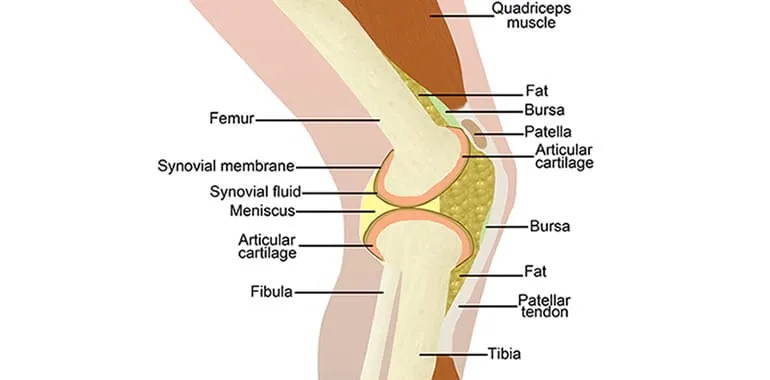Knee pain is a bit like back pain: it seems like everyone has it, and not many people really understand what they can do about it. In addition, many people are under the impression, often via trusted advice, that they “just have to live with it” because they’re “getting older”.
If this sounds like you, the following information will be very helpful. I’m going to start with some basic information, starting with looking at the anatomy of the knee, from the joints, ligaments and muscles, as well as other structures. Then tell you the most common causes of knee pain.
The Joints:
although most people think of the knee as one joint, it’s actually made up of 3 joints. The main joint is where the femur (your thigh bone) meets your tibia (your shin bone). This is where you get the ability to bend and straighten your knee. We tend to look at this joint as being split into 2 compartments, one on the inside, and one on the outside. You also have your “patello-femoral joint”, which refers to your kneecap as it glides up and down the groove in your femur (thigh bone). The 3rd joint is where the smaller bone of the leg (fibula) rests against the side of the tibia.
The Ligaments:
your knee has 4 primary ligaments, which include your MCL, LCL, ACL, and PCL. You probably don’t need to know the specific names of each, but feel free to Google them if you’re curious! The main thing to know is that ligaments connect bones to bones and provide support for the knee. For example, MCL and LCL ligaments provide support to the inside and outside of the knee and are located on the outside of the joint, while your ACL and PCL are located inside the joint and provide support to twisting motions, as well as motions that involve your tibia sliding forward and backward in relation to the femur.
The Muscles:
The largest muscle in your body is the “quadriceps” group (aka “quads”), which as the name implies, is actually a group of 4 muscles. This large muscle group runs along the front of your thigh down towards the kneecap (patella). It then engulfs the kneecap and attaches to the front of your shin bone via the patellar tendon. Other important muscles that cross the knee joint include the hamstrings and calf muscles.
Other Structures:
nside your knee, you also have 2 menisci, one meniscus for the inside compartment, and one for the outside. You can think of these as soft tissue rings that go around the outside of each circular compartment and offer extra stability. The ends of each bone in the knee are covered in cartilage, which is what is involved in arthritis. Another structure is the “IT Band” (iliotibial band).
The most common causes of knee pain that we treat in the clinic include:
The author, Dr. Carlo Sayo, is a Doctor of Physical Therapy and co-owner of Empower Physical Therapy and Wellness in Chino Hills. He’s happy to answer any questions about knee pain by phone at (909) 907-0805 or by email at Carlo@empowerPTwellness.com


